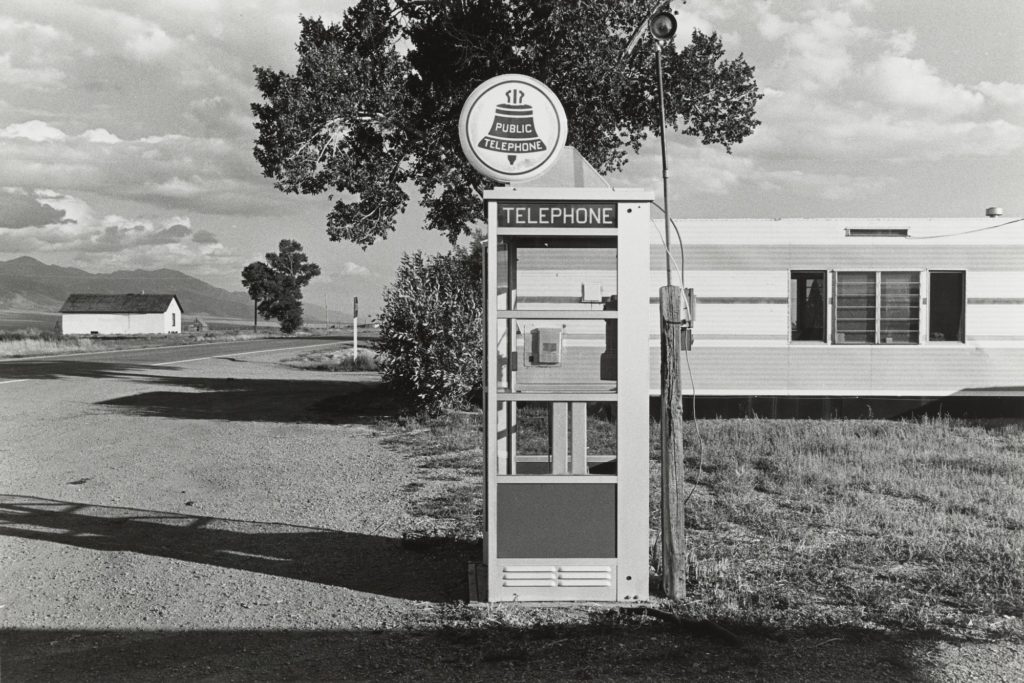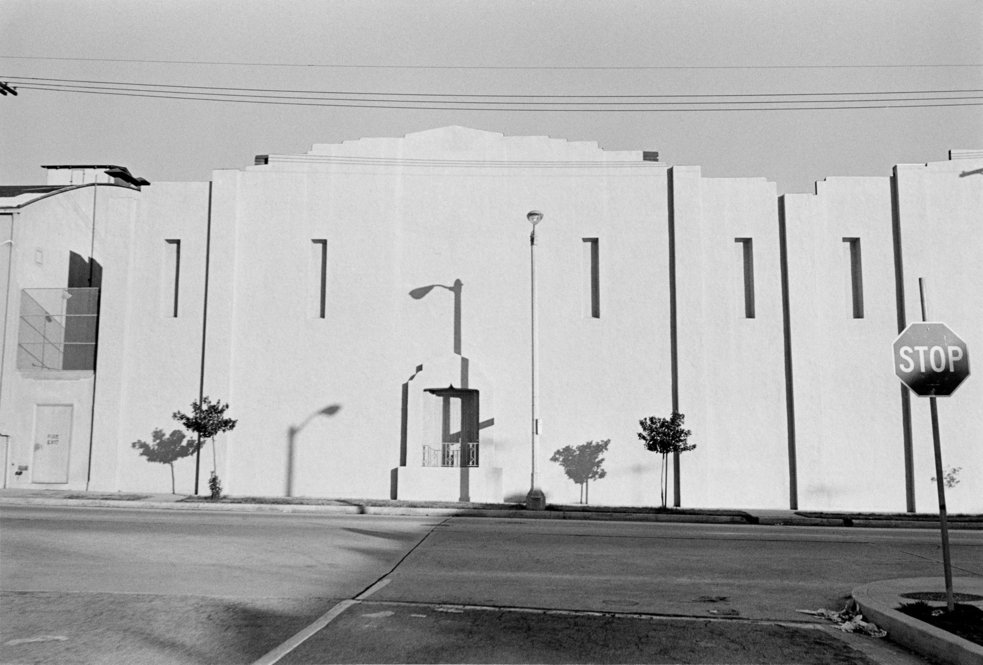Henry Wessel Jr.
Henry Wessel Jr. was an American photographer, born in 1942, best known for his black and white images, showcasing the every day life in America’s West, and his large role in the founding of the New Topographic movement. Wessel was known to always to carry his camera with him, taking photographs as he sees it, in an almost documentary like manner. These images are a result of the exploration of the crossover between nature and urbanisation in 1970s America.
Analysis

This black and white photograph, taken by Henry Wessel Jr. displays an urban landscape, towered over by the mass number of telephone wires, and palm trees. These wires act as leading lines in Wessel’s image, directing the viewers eye down towards the pristine, white buildings. It can also be said that Wessel took this image at head height, looking up, due to the shadow of him in the lower right hand corner. Furthermore, the empty space in this photograph, seen in the vacant car park in the foreground and the cloudless sky in the upper half of the image, result in the photograph having an almost eerie atmosphere. Here there is a strong contrast between light and dark, fueled by the black and white tones of the image, seen in the drastically opposing shadows in the lower left of the photograph , and the white buildings highlighted by the sun
From a technical viewpoint, it can be said that Wessel captured this photograph with the natural lighting, due to the organic shadows created by the structures in the image. In addition, because of this large amount of natural light, a low ISO setting must of been needed in order to capture a piece that is not over exposed. By looking at the focus in the foreground and the background, it appears that Wessel used a low aperture as it seems that it is evenly spread. The shutter speed setting used to capture this photograph could of been a medium to fast speed, due to the lack of movement or blur in Wessel’s piece.
Looking at this photograph, it could be argued that here Wessel was aiming to draw attention to the urbanisation of the west, as part of the New Topographic theme his images posses. This could be seen through the towering palm trees that are intruding on this concrete landscape, signifying last remainder of nature that has not been destroyed by man. Furthermore, the telephone lines could act as a representation of the confines that man-made structures have had on the free flow of nature.






